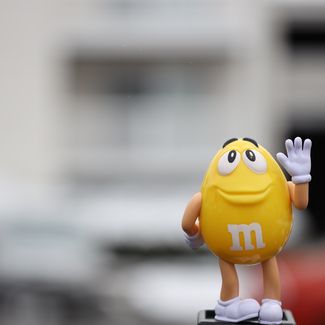
The conversation
The Conversation: bin the Safety Dance and say hello to Fluent Devices
Instead of relying on resurrecting old pop culture, create some of your own
20 February 2023
Now the dust has settled on Super Bowl LVII from Glendale, Arizona, which saw Kansas City Chiefs triumph over Philadelphia Eagles, it’s an opportunity to reflect on the annual ad jamboree. Other winners according to Northwestern University's Kellogg School of Management, which ranks ads on qualities such as distinction and positioning, included T-Mobile, Google and Kia.
The T-Mobile spot played on nostalgia, featuring John Travolta singing "Summer Nights" from Grease. Several other advertisers also took a trip down memory lane, with Alicia Silverstone reprising her role from the 1995 film Clueless in an ad for Rakuten; Intuit TurboTax using the 80s song "Safety Dance" from Men Without Hats; and Adam Driver starring in a Squarespace commercial that evoked The Matrix.
All are, perhaps, examples of advertisers trying to create a longer-tail for their advertising beyond the single serve of the game itself (in which a 30-second spot costs around $7 million) by appending themselves to existing cultural icons. The issue of how to build seasonal or event ads into something more enduring is something that Jon Evans, chief customer officer at System1, explored on Creative Salon last week. And it's particularly pertinent in the UK, where Christmas is the UK industry's equivalent of delivering an advertising dopamine hit.
In short, Evans says that event ads, like those in the Super Bowl and at Christmas, are paradoxical - they are often a brand's most expensive marketing investment but provide the shortest lifespan. Much better, he argues, to be less shy of repeating ads, and if you can't do that then repeat key elements - so-called 'Fluent Devices' (such as ALDI's Kevin the Carrot or the M&Ms brand characters) that are timelessly resonant.
They are also expensive and timely to build, which is perhaps why so many Super Bowl advertisers this year turned to established cultural references from film and music from the 80s and 90s in the hope that they'd do the hard lifting for them.
This segues neatly into the tenth anniversary of the publication of The Long and the Short of It, whose continued relevance we also analyse this week. The book was designed to look at the relationship between short-term and long-term marketing - but not pitch one against the other. It is more about how they work in combination and not conflict. The answer to its relevance seems to be a resounding 'yes', and studies have shown that those brands that invest in long-term advertising double the profit of those that only adopt a short-term approach.
In which case now might be a time to consider creating or resurrecting some Fluent Devices of your own. Although that won't do much to help rehabilitate the fortunes of pop stars and silver screen idols from days of yore.




